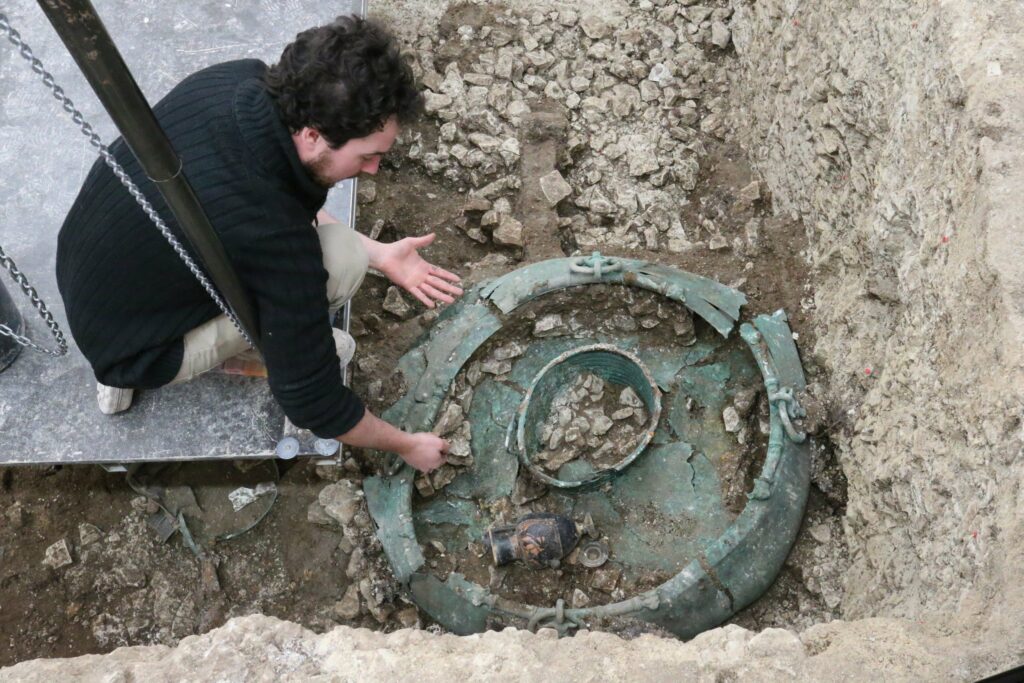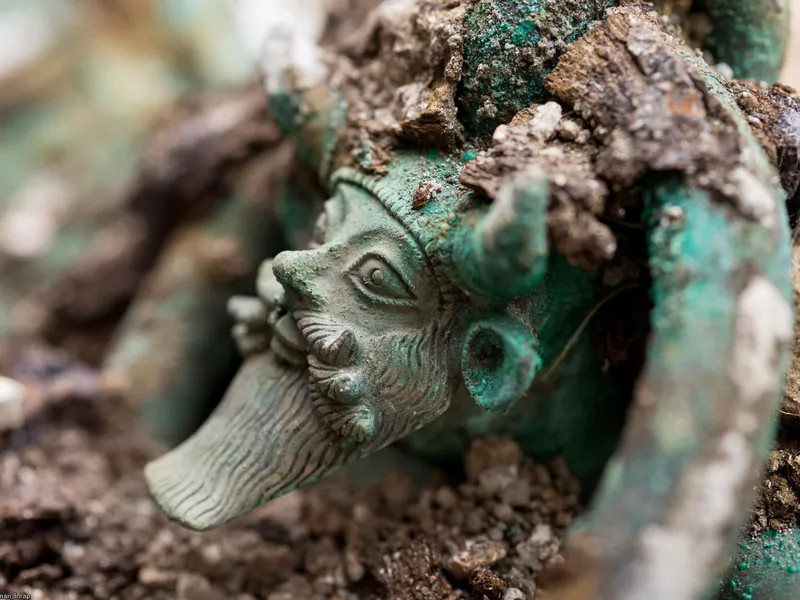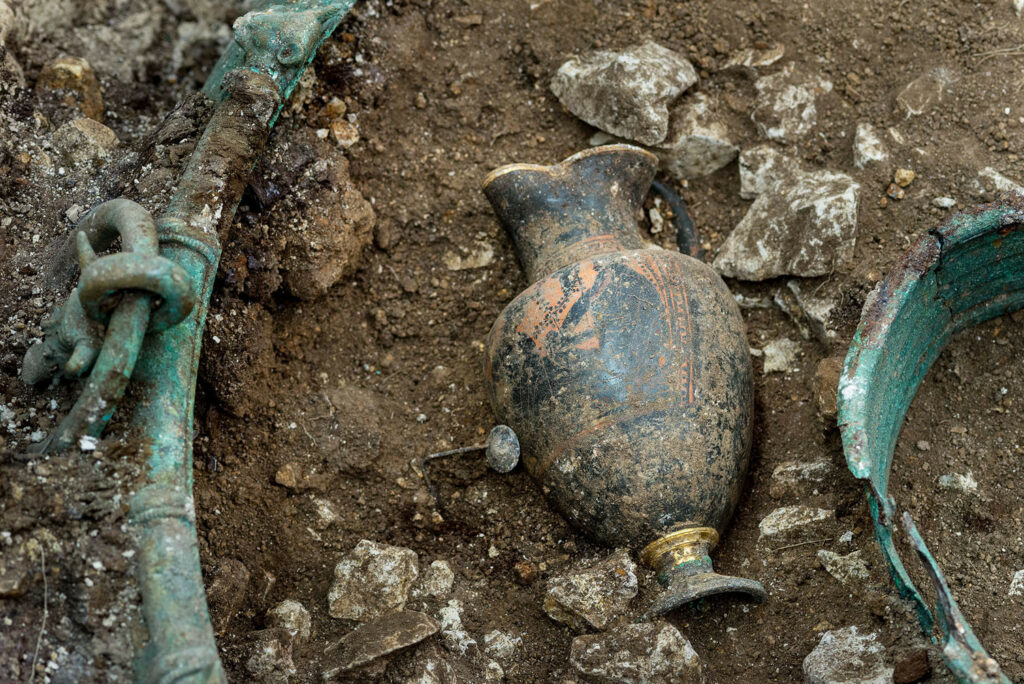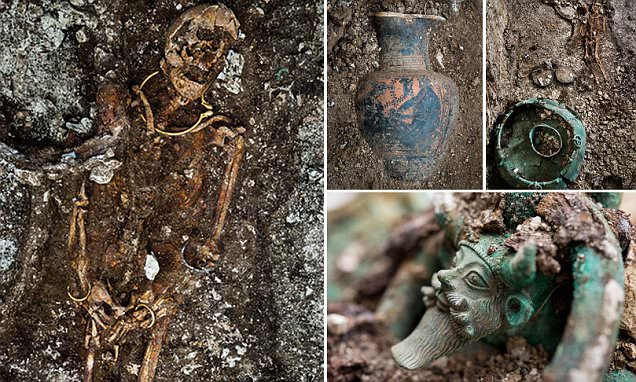The Tomb of the Celtic Prince

In the heart of ancient France, a remarkable discovery has provided a fascinating insight into the complex cultural exchange between the Celts and Mediterranean civilizations. Hidden beneath the earth, a large funerary chamber dating back to the 5th century BC is believed to be the final resting place of a powerful Celtic prince.
The Cauldron of Achelous
A Masterpiece of Artistry and Cultural Fusion

Among the treasures unearthed from this ancient tomb, one artifact stood out as a true masterpiece – a colossal cauldron adorned with the intricate imagery of Achelous, the revered Greek river god. This remarkable piece showcased the fusion of Celtic and Hellenic cultures, with the inclusion of the Greek deity’s likeness demonstrating the profound influence of ancient Greece upon the funerary rites and material culture of the Celts.

The interior of the cauldron further revealed the richness of this cultural interconnectedness, displaying an image of Dionysus, the god of wine, watching over a woman—highlighting the intertwined mythologies and beliefs that connected these ancient civilizations.
The Wealth and Trade of the Celtic Prince
A Node in the Ancient Mediterranean Network

The wealth and far-reaching trade connections of the Celtic Prince were evident in the array of artifacts discovered within the tomb. Exquisite pottery and gold-decorated drinkware spoke of a society that was an integral part of the vast Mediterranean trade network, exchanging goods and cultural influences with their neighbors across the sea.

The discovery of this extraordinary Celtic tomb and its remarkable cauldron, featuring the imagery of the Greek god Achelous, offers a captivating glimpse into the cultural complexity and interconnectedness of the ancient world. It challenges conventional narratives and reveals the sophisticated nature of Celtic society, its interactions with the wider Mediterranean world, and the rich tapestry of cultural exchange that characterized this pivotal era in history.

